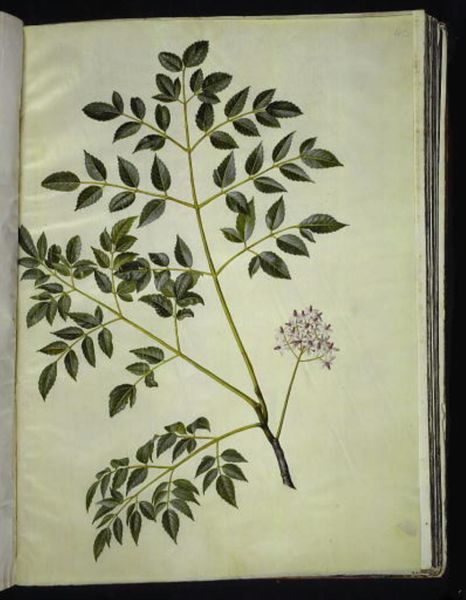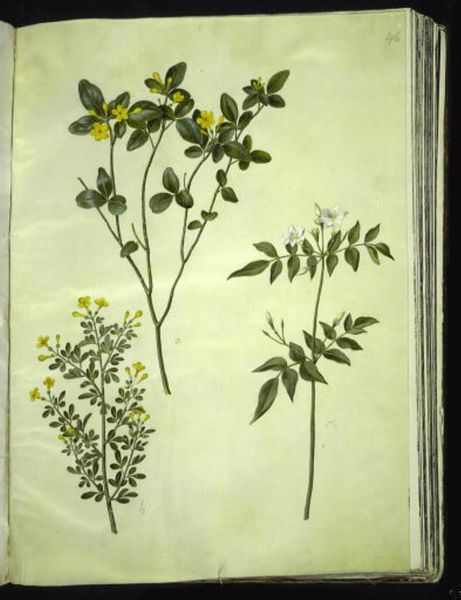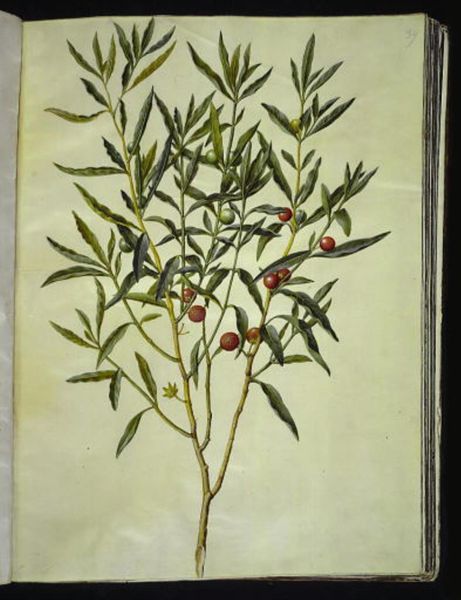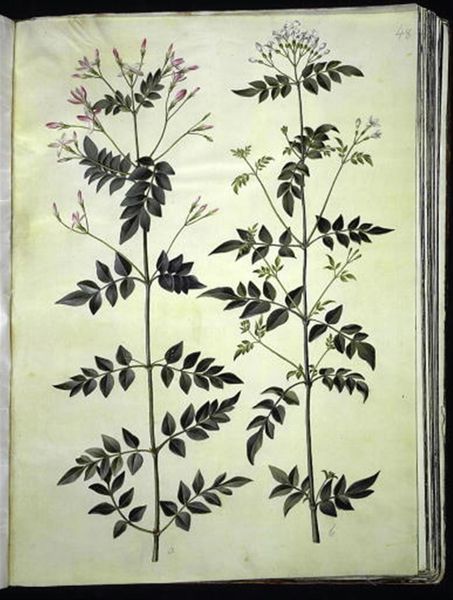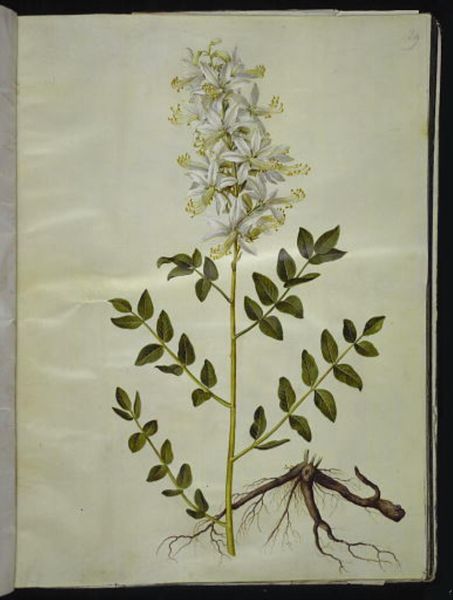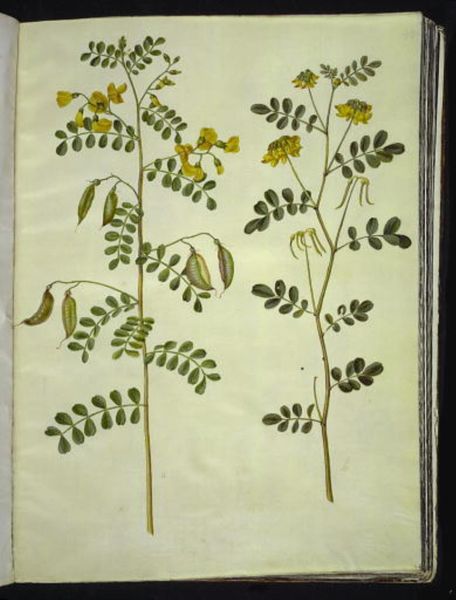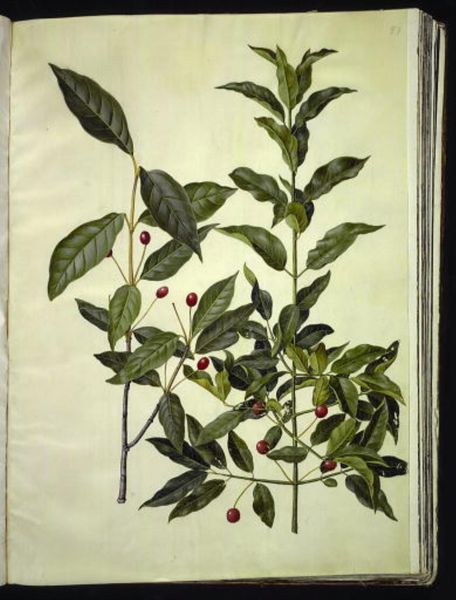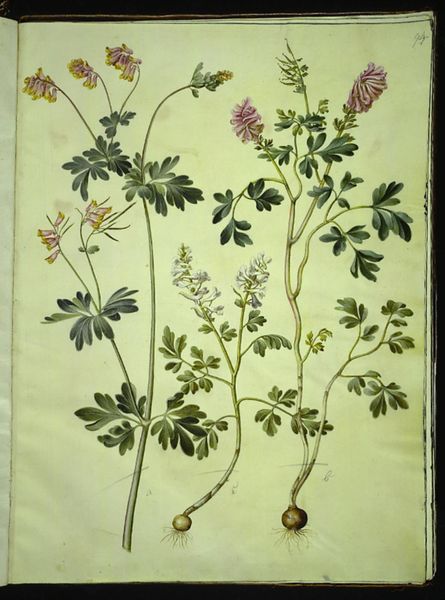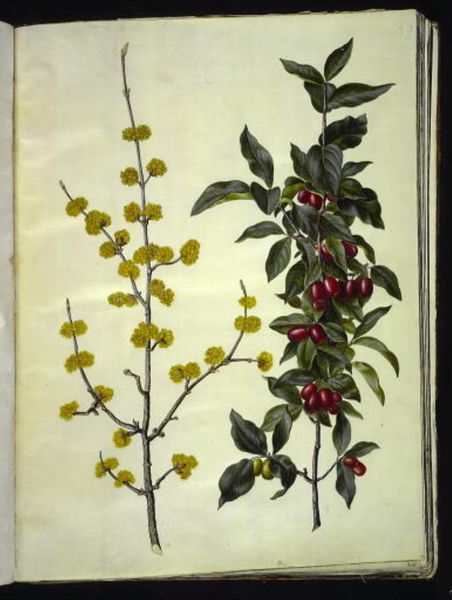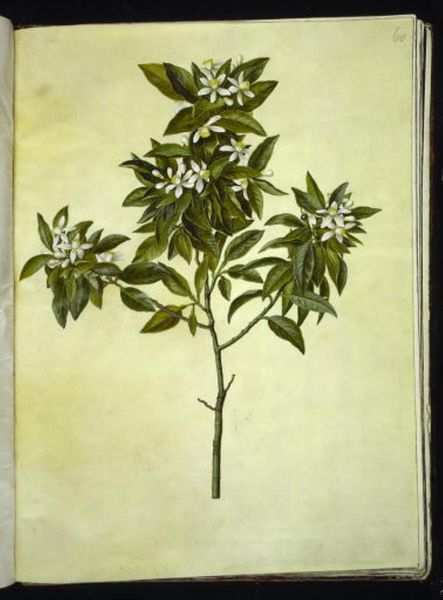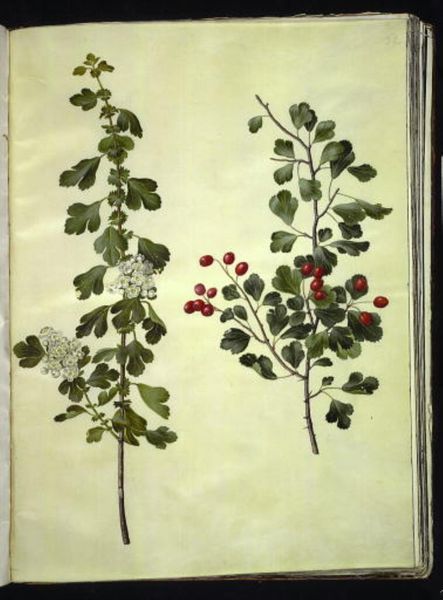
Ligustrum vulgare (almindelig liguster) 1649 - 1659
0:00
0:00
drawing, coloured-pencil, gouache, watercolor
#
drawing
#
coloured-pencil
#
ink painting
#
gouache
#
watercolor
#
coloured pencil
#
watercolour illustration
#
academic-art
#
watercolor
#
realism
Dimensions: 505 mm (height) x 385 mm (width) (bladmaal)
Editor: Here we have a spread featuring "Ligustrum vulgare," or common privet, rendered in watercolor, gouache, colored pencil, and ink. It was created sometime between 1649 and 1659 by Hans Simon Holtzbecker and is part of the collection at the SMK. The details are striking – the berries especially feel real! But I wonder, what does this kind of intense focus on botanical accuracy communicate? Curator: It whisks me away to a different time, almost! Imagine, before photography, artists like Holtzbecker were vital in documenting the natural world. It’s like a blend of art and science – this need to record what they saw with almost painstaking precision. Don't you find the stark white background draws you into a meditative state, where suddenly the texture of a single leaf seems monumentally important? Editor: I do! I hadn't thought about the lack of photography playing a role in its creation, but that adds an extra layer of appreciation for his meticulous work. So, is the aesthetic primarily a by-product of its historical function, or can we glean artistic intent here too? Curator: Oh, certainly intent! There’s a quiet drama in the contrasting greens, the placement of each stem... It reminds me of ikebana, a still life seeking a sense of harmony. It's more than just a record, it's a quiet hymn to the beauty of privet. Perhaps Holtzbecker found peace, a personal sanctuary, in meticulously capturing these details, inviting us to do the same. What do you think? Editor: I think you’ve shifted my whole perspective! I came in seeing mainly botanical illustration, and now I feel its artfulness so much more acutely. I didn't notice the relationship between stems until you called attention to it. Thanks. Curator: It’s a pleasure. That’s the magic of art, isn’t it? To always have new ways to perceive it.
Comments
No comments
Be the first to comment and join the conversation on the ultimate creative platform.
